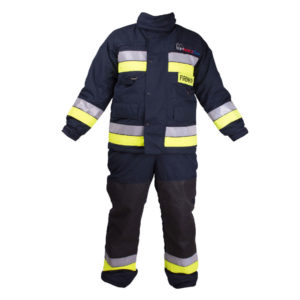Purchasing fire safety equipment is crucial for safeguarding people and property in home and commercial environments. Selecting the appropriate equipment is essential whether you’re updating fire safety features in an existing structure or outfitting a new one. In this blog, we’ll go over the important things to think about so you can make well-informed selections that put safety first when purchasing fire safety equipment.
Factors to Consider When Buying Fire Safety Equipment
Type of Fire Safety Equipment:
The first consideration when buying safety equipment is determining the specific types of equipment you need for your premises. Common fire safety equipment includes fire extinguishers, smoke detectors, fire alarms, fire blankets, and emergency lighting. Assess the size and layout of your property, as well as any specific fire hazards present, to determine the most suitable types of equipment.
Compliance with Regulations and Standards:
Ensure that the safety equipment you purchase complies with relevant regulations and standards set forth by local authorities and regulatory bodies. There may be particular regulations in effect in various jurisdictions concerning the kind, location, and upkeep of fire safety equipment. Make sure the apparatus complies with relevant regulations to guarantee both legal compliance and safety.
Placement and Coverage:
For efficient fire prevention and response, fire safety equipment must be positioned and covered properly. When choosing where to place smoke detectors, fire extinguishers, and other equipment, take into account elements including the size and layout of your property, the position of any potential fire hazards, and the number of people. Ensure that equipment is easily accessible and strategically positioned to provide adequate coverage throughout the premises.
Quality and Reliability:
To ensure dependability and longevity, make an investment in fire safety equipment of the highest caliber from recognized manufacturers or suppliers. Select machinery that has undergone extensive testing and satisfies industrial requirements for dependability and performance. While cost-effective options may be tempting, prioritize quality and reliability to ensure the effectiveness of your safety measures when they are needed most.
Maintenance and Servicing Requirements:
Regular maintenance and servicing are essential for keeping fire safety equipment in optimal working condition. Before purchasing, consider the maintenance requirements of the equipment, including inspection intervals, testing procedures, and servicing schedules. Ensure that you have a plan in place for routine maintenance and that servicing can be conducted by qualified professionals to maintain compliance and effectiveness.
Additional Considerations and Conclusion
Integration with Fire Safety Systems:
Consider how safety equipment integrates with existing safety systems and infrastructure on your premises. Ensure compatibility with fire alarm systems, sprinkler systems, and other fire suppression measures to create a comprehensive fsafety strategy. Coordinate with safety professionals to design an integrated system that maximizes effectiveness and minimizes the risk of false alarms or system failures.
Budget and Cost Considerations:
Finally, consider your budget and cost constraints when purchasing safety equipment. While it’s essential to invest in quality equipment that meets your needs, balance cost considerations with the importance of safety and compliance. Explore pricing options, including bulk discounts, leasing arrangements, and financing options, to find the most cost-effective solutions without compromising on quality or safety.
Conclusion
Buying fire safety equipment requires careful consideration of several factors, including the type of equipment needed, compliance with regulations, placement and coverage requirements, quality and reliability, maintenance and servicing needs, training and education, integration with existing systems, and budget considerations. By evaluating these factors and prioritizing safety, you can select the right safety equipment to protect lives and property effectively.











